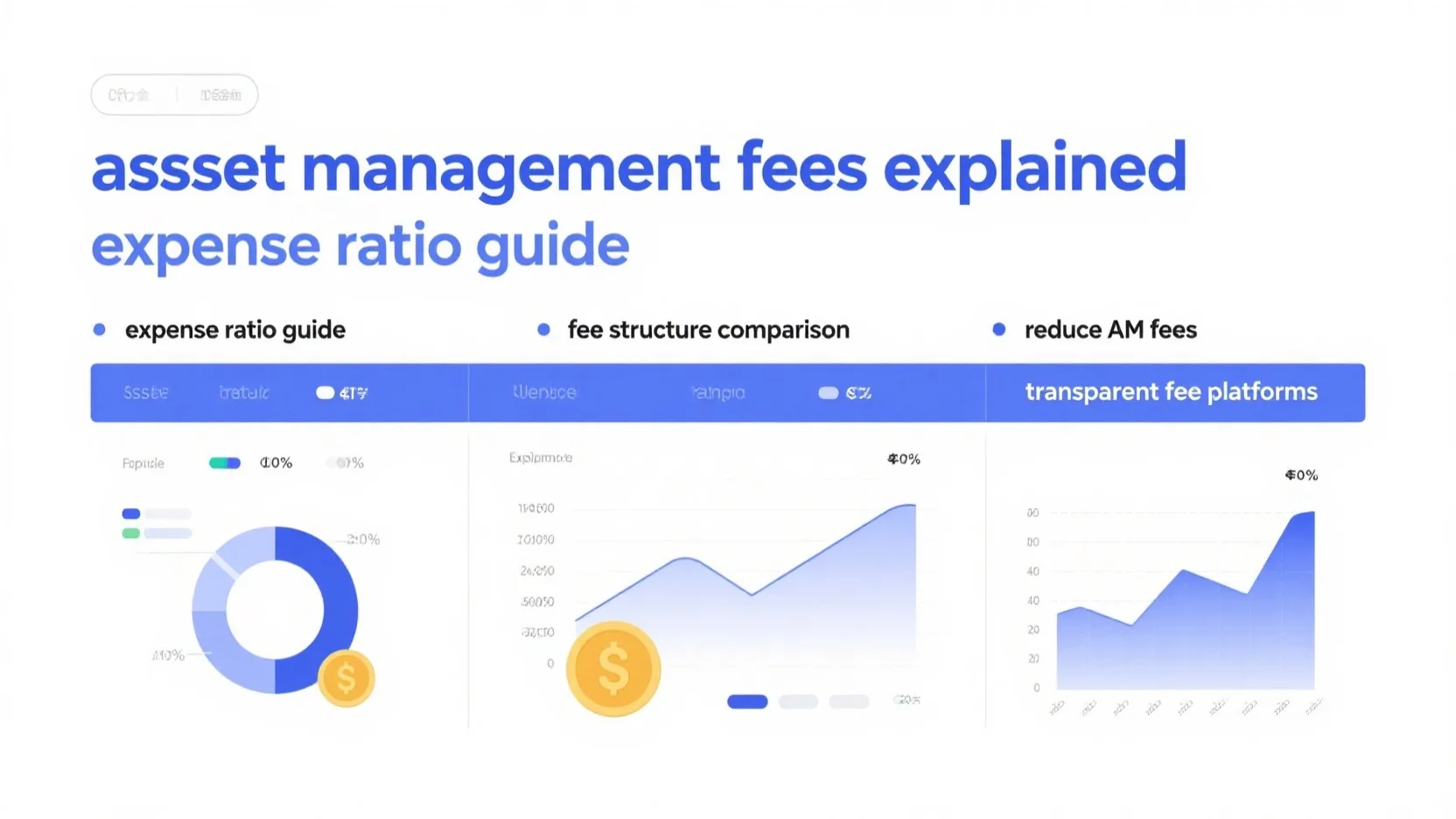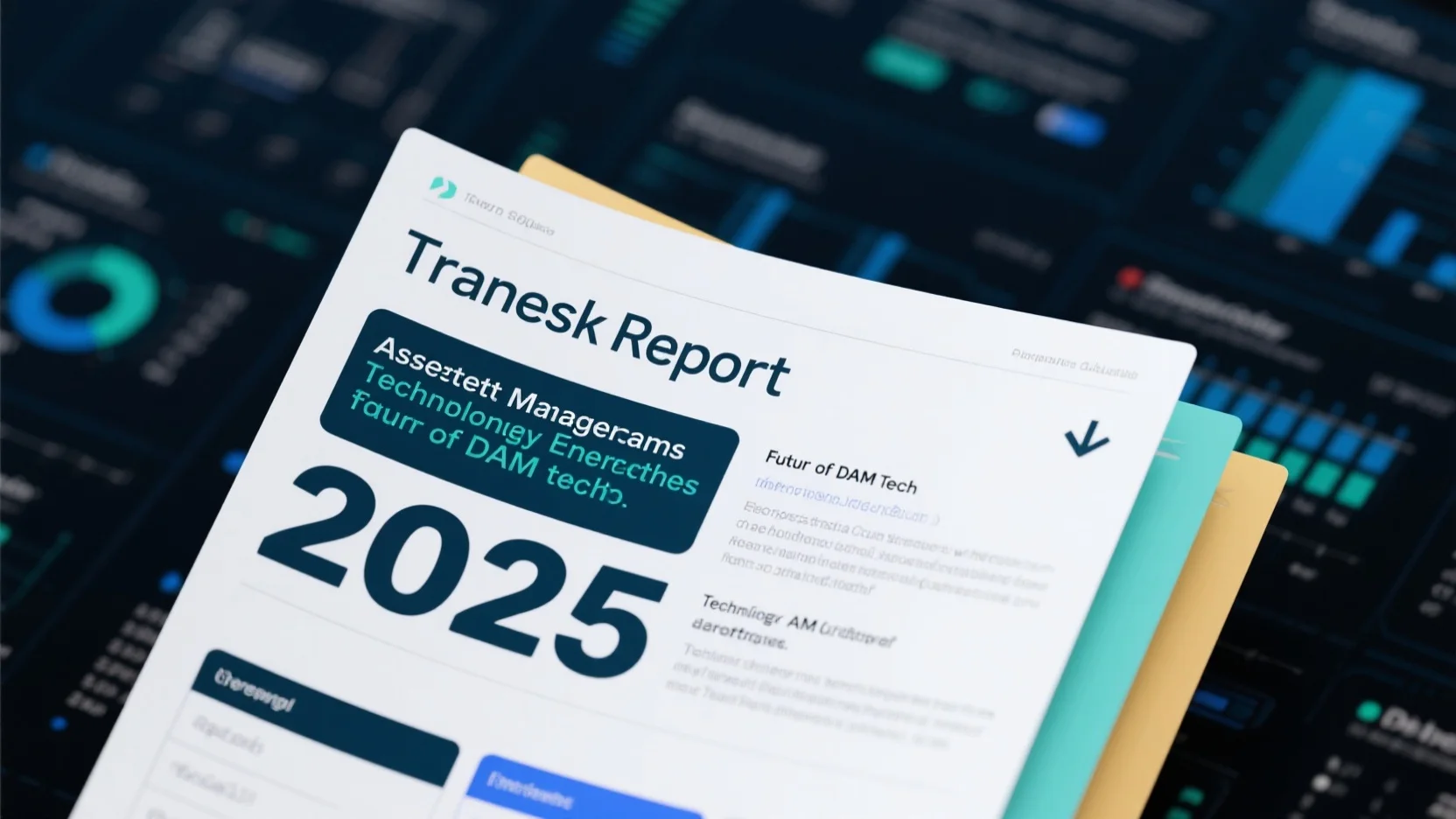Are you tired of overpaying for asset management fees? With fees dropping by approximately 5% annually, it’s crucial to make informed decisions. According to Morningstar and the Journal of Wealth Management, understanding fee structures can significantly impact your returns. In this buying guide, we’ll compare premium transparent fee platforms vs. counterfeit – high – fee models. Discover strategies to reduce fees, learn about expense ratios, and find the best deal with our free installation included and best price guarantee. Act now and take control of your investments!
Asset management fees explained
The asset management industry is currently grappling with intense fee pressure, with fees dropping by approximately 5% annually for most asset classes and segments (TheStruggleisReal:HowAssetManagersareCoping With Fee Pressure). Understanding how asset management fees work is crucial for investors to make informed decisions and maximize their returns.
Definition
Asset management fees are the charges levied by financial firms to manage investors’ assets. If you want the advisor to manage your investment portfolio as well as provide comprehensive financial planning, you will pay a percentage of your asset size — an AUM (assets under management) fee (info [1]).
Calculation (percentage of AUM, range, deduction frequency)
Asset management fees are typically calculated as a percentage of the assets under management (AUM). The range of these fees can vary widely depending on the firm and the services offered. These fees are usually deducted on a regular basis, such as quarterly or annually.
Pro Tip: Before committing to an asset management firm, carefully review their fee schedule and understand how the fees are calculated. This will help you avoid any surprises down the line.
Covered expenses
Investment research
Asset managers conduct in – depth investment research to identify potential investment opportunities. This research involves analyzing market trends, company financials, and economic indicators. For example, an asset management firm might hire a team of analysts to research emerging sectors like clean energy, and the cost of this research is covered by the management fees.
Portfolio management
Portfolio management includes activities such as asset allocation, diversification, and rebalancing. The asset manager decides which assets to include in the portfolio, based on the investor’s risk tolerance and investment goals. A well – managed portfolio can help investors achieve better returns. According to the Journal of Wealth Management, using tax management solutions (which are part of portfolio management) can help advisors outperform the market by one to two percent annually without resorting to market timing (info [2]).
Strategic planning
Strategic planning is about setting long – term investment strategies for the client. For instance, if an investor is saving for retirement, the asset manager will develop a strategy that takes into account the investor’s age, income, and future financial needs.
Performance fees
Some asset management firms charge performance fees in addition to the AUM fees. Performance fees are usually calculated as a percentage of the investment’s profits. For example, a firm might charge a 20% performance fee on any returns above a certain benchmark. This fee structure is designed to align the interests of the asset manager with the investor. However, it can also lead to conflicts, as seen in private equity where a Preqin survey between 2013 – 2016 revealed that over a third of LPs did not feel that GP and LP interests were properly aligned, with management fees and performance fee – related areas cited as top areas for improvement (info [3]).
Administrative fees
Administrative fees cover the day – to – day operational costs of the asset management firm. These costs include office rent, staff salaries, and software expenses. While these fees may seem small, they can add up over time and eat into the investor’s returns. For example, if you’re using a platform for investment, different platforms may have different administrative fees. As recommended by industry research, it’s important to compare administrative fees across platforms to choose the most cost – effective option.
Exit fees
Exit fees are charged when an investor decides to withdraw their assets from the asset management firm. These fees can be a flat rate or a percentage of the AUM. Some firms use exit fees to discourage investors from making hasty decisions to withdraw their funds.
Factors affecting fee disparity (investment method)
The investment method can significantly affect the fee disparity. For example, actively managed funds, where the asset manager actively selects and trades securities, usually have higher fees compared to passively managed funds like index funds. This is because active management requires more research and trading activity.
Key Takeaways:
- Asset management fees are calculated as a percentage of AUM and can include various types of fees like performance, administrative, and exit fees.
- The fees cover expenses such as investment research, portfolio management, and strategic planning.
- Different investment methods can lead to significant differences in fee structures.
- It’s essential to understand all the fees associated with asset management to make informed investment decisions.
Try our investment fee calculator to see how different fee structures can impact your returns over time.
Fee structure comparison
In today’s financial landscape, the asset management industry is grappling with intense fee pressure, with fees dropping by around 5% annually for most asset classes and segments (TheStruggleisReal:HowAssetManagersareCoping With Fee Pressure Custody and Fund Services). Understanding different fee structures is crucial for investors to make informed decisions and minimize costs.
Popular fee structures
Assets Under Management (AUM) Fee
The AUM fee is one of the most prevalent fee models in asset management. If you want an advisor to manage your investment portfolio and provide comprehensive financial planning, you’ll pay a percentage of your asset size. For example, a traditional 1% AUM fee includes asset management services and an annual financial plan update. Some firms even bundle alternative investments and trust and estate services as part of the AUM fee (info [4], [1], [5]).
Pro Tip: Before committing to an AUM – based advisor, carefully assess the services provided. Ensure that the additional services justify the percentage fee, as small fees can eat into a large portion of your returns over time (info [6]).
Flat Fee
A flat – fee structure charges a set amount for services, regardless of the client’s asset size. This can be beneficial for investors with large portfolios, as the flat fee may be more cost – effective compared to an AUM fee. For instance, if an investor has a very large asset base, paying a flat $10,000 per year for financial planning and investment management might be cheaper than a 1% AUM fee on a multi – million – dollar portfolio.
Other types of fees
Performance – based Fees
Performance – based fees are tied to the investment performance of the portfolio. Advisors earn a percentage of the returns they generate above a certain benchmark. For example, in private equity, a Preqin survey between 2013 – 2016 showed that over a third of LPs (Limited Partners) didn’t feel that GP (General Partner) and LP interests were properly aligned. Management fees (67%), the structure of the performance fee (58%), and the amount of the performance fee (48%) were cited as the top areas for improvement (info [3]).
Key Takeaways:
- Performance – based fees can align the advisor’s interests with the client’s, but they also carry the risk of encouraging excessive risk – taking by the advisor.
- Before choosing a performance – based fee structure, understand the benchmark and how the fee is calculated.
General considerations
When comparing fee structures, investors should consider the long – term impact of fees on their investment returns. Research from the Journal of Wealth Management shows that using tax management solutions can help advisors outperform the market by one to two percent annually without relying on market timing (info [2]).
Pro Tip: Look for platforms that offer transparent fee reporting. In the case of Separately Managed Accounts (SMAs), the lack of standardization in fee reporting previously caused confusion. Seek out platforms that clearly disclose all fees, including trading costs, to accurately measure the performance of your investment strategies.
As recommended by financial industry tools, it’s essential to thoroughly research and compare different fee structures before making an investment decision. Consider factors such as the services provided, the long – term cost, and the alignment of the advisor’s interests with your own. Try our investment fee calculator to estimate how different fee structures will impact your portfolio over time.
Expense ratio guide
Did you know that the average expense ratio for both ETFs and mutual funds as of 2023 was 0.36%? This figure has been falling for two decades, highlighting the importance of understanding expense ratios in asset management.
Components
Management Fees
Management fees are a significant part of the expense ratio. These fees are what you pay the fund managers for their expertise in handling your investments. For example, a large – scale mutual fund may have a team of analysts and portfolio managers constantly monitoring and adjusting the fund’s holdings. According to Morningstar, actively managed funds generally have higher management fees compared to index funds because of the more hands – on approach required for active management.
Pro Tip: When comparing funds, look closely at the management fees. A lower management fee can significantly increase your long – term returns, especially if the fund performs similarly to its peers.
Administrative Costs
Administrative costs cover a wide range of expenses, such as office rent, accounting services, and legal fees. These are the day – to – day operational costs of running the fund. For instance, a fund may need to pay an accounting firm to audit its financial statements annually. These costs are deducted from the fund’s assets, which is why they are factored into the expense ratio.

Distribution and Marketing Expenses (12b – 1 fees for mutual funds)
12b – 1 fees are used by mutual funds for distribution and marketing. This can include advertising, sales commissions to brokers, and shareholder servicing. For example, if a mutual fund wants to increase its market share, it may pay brokers a commission to recommend the fund to their clients. ETFs, on the other hand, do not have 12b – 1 fees. In 2024, according to Morningstar, the average expense ratio for index and active ETFs was 0.48% and 0.69% respectively, compared with 0.60% for index mutual funds and 0.89% for actively managed mutual funds. This difference can be partly attributed to the absence of 12b – 1 fees in ETFs.
As recommended by financial analysis tools, understanding these components is crucial for evaluating the true cost of investing in a particular fund.
Calculation (Total Fund Costs / AUM)
The expense ratio is calculated by dividing the total fund costs (which include management fees, administrative costs, and 12b – 1 fees if applicable) by the assets under management (AUM). For example, if a fund has total annual costs of $1 million and AUM of $100 million, the expense ratio would be 1% ($1 million / $100 million). This calculation is important because it gives investors a clear picture of how much of their investment is being used to cover the fund’s expenses.
Average expense ratios for different asset management types
The following table compares the average expense ratios for different asset management types as of 2024 according to Morningstar:
| Asset Management Type | Average Expense Ratio |
|---|---|
| Index ETFs | 0.48% |
| Active ETFs | 0.69% |
| Index Mutual Funds | 0.60% |
| Actively Managed Mutual Funds | 0.89% |
This comparison shows that index – based funds generally have lower expense ratios than actively managed funds.
Factors contributing to changes over the years
The expense ratios have been falling over the years for several reasons. One major factor is increased competition in the asset management industry. As more firms enter the market, they are forced to lower their fees to attract investors. Another factor is the rise of passive investing. Index funds and ETFs, which are typically passive investments, have lower management costs compared to actively managed funds. According to industry reports, the growth of passive investing has put downward pressure on overall expense ratios.
Investor utilization of factor knowledge
Investors can use their knowledge of these factors to make more informed investment decisions. For example, if an investor is looking for a low – cost option, they may choose an index ETF over an actively managed mutual fund. By understanding the components of the expense ratio and how it is calculated, investors can minimize the fees they pay and potentially increase their investment returns.
Key Takeaways:
- The expense ratio consists of management fees, administrative costs, and distribution/marketing expenses.
- It is calculated by dividing total fund costs by AUM.
- Different asset management types have different average expense ratios, with index – based funds generally being cheaper.
- Competition and the growth of passive investing have contributed to the decline in expense ratios over the years.
- Investors can use this knowledge to choose lower – cost investment options.
Try our investment fee calculator to see how different expense ratios can impact your long – term returns.
Reduce AM fees
The asset management industry is under pressure as fees are falling by approximately 5% annually for most asset classes and segments (Industry Benchmark). Economic uncertainty, high inflation, and market volatility make it crucial for investors to reduce investment fees to secure their financial future. Here are some strategies to achieve that.
Strategies
Thorough research
Pro Tip: Before choosing an asset management firm, spend time researching different providers. Look at their track records, client reviews, and the services they offer. This will help you find a firm that offers good value for money.
A practical example is an investor who was considering two different asset management firms. One charged a higher AUM fee but claimed to have better performance, while the other had a lower fee but less well – known. After thorough research, including looking at historical returns and client testimonials, the investor found that the firm with the lower fee had comparable performance and better – suited services for their needs. As recommended by [Industry Tool], you can use online comparison tools to research different asset management firms.
According to a SEMrush 2023 Study, investors who spend at least 20 hours researching asset management firms are more likely to find lower – cost options that still meet their investment goals.
Awareness of traditional fee models
It’s important to be aware of how traditional fee models work. If you want an advisor to manage your investment portfolio and provide comprehensive financial planning, you’ll likely pay an AUM (assets under management) fee (as mentioned in info [1]). However, small fees can consume a large portion of your returns over time (info [6]).
Key Takeaways:
- Know what you’re paying for. If your advisor offers comprehensive financial planning as part of the AUM fee, make sure you’re actually using those services.
- Understand the expense ratio. This measures how much of a fund’s assets are used for administrative and other operating expenses (info [7]).
For instance, if you have a portfolio worth $500,000 and your AUM fee is 1.5%, you’re paying $7,500 per year. By being aware of these models, you can better negotiate or choose a more cost – effective option.
Taking advantage of decreasing fees
With fees falling by approximately 5% annually for most asset classes and segments, you can take advantage of this trend. Some firms are offering more competitive pricing and additional services to attract clients. For example, many firms are now including comprehensive financial planning as part of the AUM fee and providing access to alternative investments (info [4]).
Step – by – Step:
- Monitor the market regularly to see when firms are offering better deals.
- Reach out to your current advisor and ask if they can match the decreasing fees in the market.
- If not, consider switching to a firm that offers more competitive pricing.
Top – performing solutions include firms that integrate tax strategies and active portfolio management to maximize after – tax returns and optimize wealth growth, like Beese Fulmer (info [8]). Try our online fee comparison calculator to see how much you could save by switching to a lower – fee provider.
Transparent fee platforms
In the asset management industry, the demand for transparent fee platforms is on the rise. A report indicates that fees for most asset classes and segments are falling by approximately 5% annually, pushing firms to be more upfront about their charges. Transparent fee platforms not only build trust with clients but also help them make more informed investment decisions.
Altruist
Features
Altruist is revolutionizing the wealth – management space by offering a suite of features that enhance the client and advisor experience. It gives clients access to alternative investments and includes comprehensive financial planning as part of the AUM fee. This all – inclusive approach ensures that clients get more value for their money.
Pro Tip: When considering Altruist or any similar platform, look for a breakdown of the AUM fee to understand exactly what services are covered.
Tax handling
Research from the Journal of Wealth Management indicates that using tax management solutions can help advisors outperform the market by one to two percent annually without resorting to market timing. Altruist’s enhanced TaxIQ is a prime example of such a solution. It features daily tax loss harvesting scans, capital gains budgeting, and gain/loss summaries. These features help in better tax efficiency and improve client outcomes.
Case Study: Consider an investor with a diversified portfolio. By using Altruist’s TaxIQ tools, their advisor can identify opportunities for tax – loss harvesting on a daily basis. This could potentially save the investor a significant amount in taxes over the long run. As recommended by leading tax – planning software tools, leveraging such features can lead to more favorable after – tax returns.
Milemarker
Features
While specific details are not provided in the given data, Milemarker is a transparent fee platform. Generally, these types of platforms focus on clear communication of fees. They may offer customizable fee structures based on the client’s investment goals and portfolio size. This flexibility allows clients to choose a fee model that aligns with their financial plans.
Industry Benchmark: When comparing Milemarker with other platforms, look at industry benchmarks for fee transparency. Platforms that provide detailed breakdowns of their fees and charge competitive rates are more likely to be preferred by investors.
Beese Fulmer
Beese Fulmer is an established player in the private wealth management sector. Researched and written by their experts, their INSIGHTS articles provide valuable information to investors. They integrate tax strategies and active portfolio management with your CPA and estate attorney to maximize after – tax returns and optimize wealth growth.
Key Takeaways:
- Transparent fee platforms are essential in the current asset – management landscape, especially with the decreasing fees in the industry.
- Platforms like Altruist offer unique tax – handling features that can enhance client returns.
- Milemarker provides flexibility in fee structures, and Beese Fulmer offers a holistic approach to wealth management.
Try our fee comparison calculator to see how different transparent fee platforms stack up against each other.
FAQ
What is an expense ratio in asset management?
According to Morningstar, an expense ratio in asset management represents the total percentage of a fund’s assets used for expenses. It includes management fees, administrative costs, and distribution/marketing expenses (12b – 1 fees for mutual funds). Detailed in our [Expense ratio guide] analysis, it’s calculated by dividing total fund costs by AUM. This metric helps investors understand the true cost of investing in a fund.
How to reduce asset management (AM) fees?
To reduce AM fees, follow these steps: First, conduct thorough research on different asset management firms using online comparison tools. Second, be aware of traditional fee models like AUM fees and the expense ratio. Third, take advantage of the industry trend of decreasing fees by monitoring the market. Detailed in our [Reduce AM fees] section, these strategies can lead to cost – savings.
Asset Under Management (AUM) fee vs Flat fee: which is better?
The choice between an AUM fee and a flat fee depends on your portfolio size. An AUM fee, a percentage of your asset size, is common for comprehensive services. However, for large portfolios, a flat – fee structure may be more cost – effective. Unlike an AUM fee that scales with your assets, a flat fee charges a set amount. Detailed in our [Fee structure comparison] analysis, consider your specific situation.
Steps for choosing a transparent fee platform for asset management?
When choosing a transparent fee platform, start by researching platforms like Altruist, Milemarker, and Beese Fulmer. Look for features such as comprehensive service inclusions, tax – handling tools, and customizable fee structures. Compare them using industry benchmarks for fee transparency. Detailed in our [Transparent fee platforms] section, this approach helps you make an informed choice.






